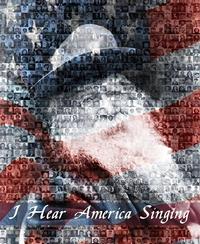“On The Beach At Night” is written by the American poet Walt Whitman. He was not only a poet but also an essayist and a journalist. He was born on May 31st, West His, New York, in 1819. He was a part of the transition between transcendentalism and realism, incorporating both views in his works. Whitman is among the most influential poets in the American canon, often called the father of free verse. The poem is made up of six stanzas. The fifth stanza is a couplet. The first and the third stanzas are made up of three lines. The second stanza has seven lies. The fourth stanza has nine lines, and the sixth stanza has eight lines.
On The Beach at Night Alone: Analysis
To begin with the title, Walt Whitman frequently utilizes symbolism in poetry. In the title of the poem, “On The Beach At Night Alone,” the beach represents standing on the shore of eternity or the afterlife. The ocean is an unknown expanse. In comparison to ocean and afterlife, a colloquialism remarks it takes an even number of rowers to row in a straight line. That is how people find heaven. Night symbolizes death. The poem- On The Beach at Night Alone, starts on a gleeful and serene note. The first three stanzas of the poem speak of the father and daughter watching the stars at night. They look upon the autumn sky in the evening “up through the darkness” while the “ravening clouds” spread about in black masses. The use of imagery helps to create a perfect picture in the reader’s mind.
The poem shows a fine appreciation of nature and its beauty. Propelling the reader to admire the beauty the narrator creates through the usage of his beautiful words. As the clouds spread out in black masses, the stars gradually show up in the sky. The poet makes a specific mention of “lord-star” Jupiter. The poet also uses the abstract from Greek mythology, pointing towards the delicate Pleiades sisters. Who approaches the night sky a little later than the “Lord- star Jupiter.” The gradual onset of night elevates the calm mood of the poem. Meanwhile, the daughter is holding her father’s hand and enjoying the sight, thus reveling in its beauty.
The sight moves her to tears, and the father gently consoles his daughter and tells her not to weep. He places gentle kisses to wipe away her tears and assures her that the “ravening clouds” shall not be victorious and possess the sky. The ‘ravening clouds” are the symbolism for night or darkness. He further tells her that the stars cannot be devoured by the black clouds and that they shall emerge in the sky soon. He asks her to be patient, for it is a virtue. Here the poet is trying to tell the reader to brace themselves through the storms that they face in their lives and not lose their patience. By doing so, they will not only succeed but can also relish in the beauty of life. He tells her to watch the sky again the other night, and by then, the Pleiades will have surely emerged in the sky. The Pleiades will then emanate their light and augment the beauty of the night.
The father tells his daughter that these stars are immortal and bestows them with such gracious virtues as silvery and golden. Stars are used as a symbolism of hope. These stars are synonymous to hope in the sense that they remain patient and endure when the dark clouds have veiled them, and eventually when their time comes, they shine and radiate their lights. This teaches the reader to not lose hope in times of utter despair when the darkness veils them and encourages the reader to take a good lesson from these stars and learn to foster hope in their hearts. The poet illuminates how despite the individualities of the different parts of the universe, the similarities that span them are stronger and seek to unite them. The imagery of the vast amount of stars amplifies the narrator as an individual compared to the multitude in his view.
The bright light of the stars enlightens the narrator because the light illuminates the sky as it does the same with the mind’s darkest recesses. The poem portrays a philosophical tone as it conjectures about the universe. The poet studies the entire cosmos as a uniting entity, further perpetuating his comparison between the universe and the individual. The poet, through this poem, paves the way for infinite possibilities. He also fosters that the universe operates in unison and coordination. “This vast similitude…shall…compactly hold and enclose them” these lines personify the universe as a being that actively ties its many parts together despite its differences. Furthermore, these similarities unite the infinitely expanding universe into one tightly knit entity.
On The Beach at Night Alone: Theme
This poem beautifully portrays the relationship between a parent and his child. The Parent often acts as a shield protecting their child from all the harm. This poem celebrates the beauty of nature and the bond between a parent and a child. The Poet parallels the bond between the father and his daughter to the evening sky laden with stars. It projects an image of hope and infinite beauty. It imparts the subtle message of hope and to endure through the darkest of times. Nature is also our teacher, for we can learn many things from it. The poet encourages the reader to value their personal relationships and also to appreciate the beauty of nature. The daughter is the symbol of innocence and purity.
She weeps at the sight of the stars being overshadowed by the dark clouds. This tells the reader to endure through the darkest tines just like the stars did and that we will eventually shine like them. The virtue of patience is an important lesson to be learned. Thus, the poet appeals to the readers to contemplate and augment the beauty of nature. The poet tells us to fall in love with nature to find our true selves when we are in unison with it.
Some online learning platforms provide certifications, while others are designed to simply grow your skills in your personal and professional life. Including Masterclass and Coursera, here are our recommendations for the best online learning platforms you can sign up for today.
The 7 Best Online Learning Platforms of 2022
- Best Overall: Coursera
- Best for Niche Topics: Udemy
- Best for Creative Fields: Skillshare
- Best for Celebrity Lessons: MasterClass
- Best for STEM: EdX
- Best for Career Building: Udacity
- Best for Data Learning: Pluralsight








